There is a reason that James Clear’s book, Atomic Habits: An Easy & Proven Way to Build Good Habits & Break Bad Ones is a New York Times bestseller and read by so many leaders. I have heard this book recommended or cited many times since it was published in 2018. I finally got around to reading it – via Audible. It was short (only 5 ½ hours listening time) with quick, concise, to-the-point chapters.
In fact, almost the entirety of the book was read while I have been engaging in a fairly new habit with my work-from-home life: during my 20-minute morning walks around my neighborhood. The Audible app on our smart phones allow us to “clip” any 30-second audio section we want to save – and it also allows us to type in notes which can then be easily accessed. Call those morning walks and clipping notes part of a new habit I engaged in while listening to this book about forming good habits and breaking bad ones.
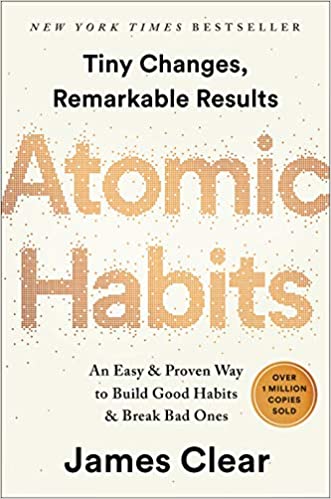
Clear tells us at the start that “success is the product of daily habits not once-in-a-lifetime transformations.” In this book, he gets us to focus on making small changes by building habits, which “compound for years and equal long-term results.” The slow pace of transformation isn’t noticeable day to day but is over the long term. To make this point hit home he says, “To write a great book, become the book.”
We often have the excuse of not having enough time to build good habits, but Clear says that good habits make time your ally; while bad habits make time your enemy.
He also says to forget about goals; focus on systems instead. As many entrepreneurs know, change can take years before it happens all at once. You do not rise to the level of your goals; you fall to the level of your systems.
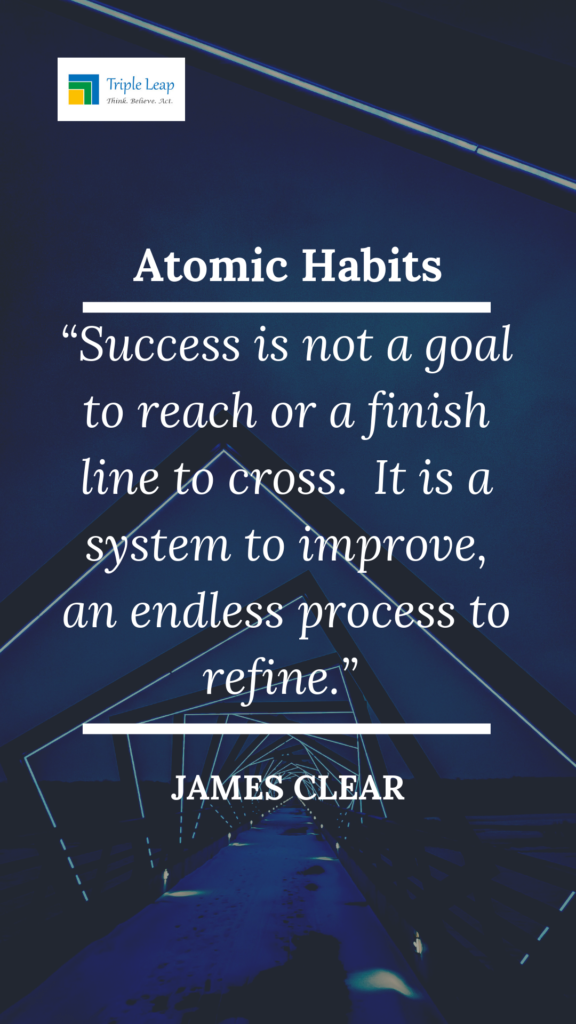
Clear also focuses on identity. Behind every system of actions, is a system of beliefs. It’s hard to change your habits if you don’t change the underlying beliefs that led to your behavior. He adds that: It’s one thing to say: I’m the type of person who wants this and another thing to say I’m the type of person who is this. Your habits shape your identity and your identity shapes your habits. This is a two-way street, and this is where Clear introduces us to the idea of feedback loops.
Cue, Craving, Response, Reward: this is the habit feedback loop. When a chore that once required effort becomes automatic, a habit has been created. A cue is about recognizing the reward; a craving is about wanting the reward; the response is about how to get the reward; and then there is the reward itself. The purpose of every habit is to solve the problems that you face. The problem phase includes the cue and the craving and it’s when you realize that action needs to be taken; the solution phase includes the response and the reward, and it includes the action that is taken.
“Every action is a vote for the kind of person you wish to become,” says Clear. Habits are reliable activities to recurring problems we face. Habits do not restrict freedom; they create it. Building habits in the present allows you to do more of what you want in the future.
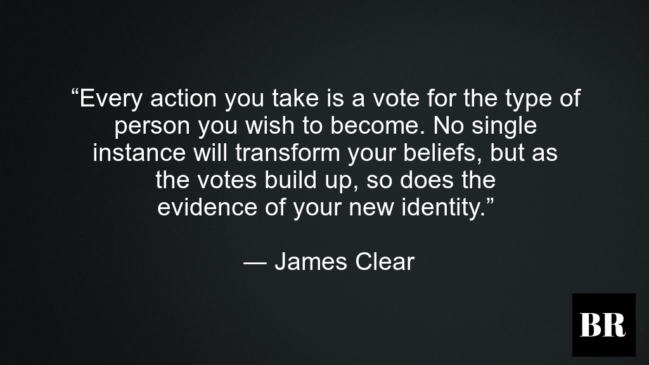
By the time we are adults, we don’t even pay attention to the habits that are running our lives.
How to change a habit?
- Cue: Make it obvious.
- Craving: Make it attractive.
- Response: Make it easy.
- Reward: Make it satisfying.
Pointing and calling is an exercise to help make us aware of our daily habits and learning what to start questioning. Make a list of daily behaviors. Then, after the list is formed: ask if it’s a good habit, bad habit, or neutral habit.
Score habits on their long-term effects. How to score? Ask yourself: does this habit help me become the person I want to be?
We must begin the process of behavior change with awareness. Before we can change our habits, we must know where to begin. Your ability to notice the cues embodies the habits you build.
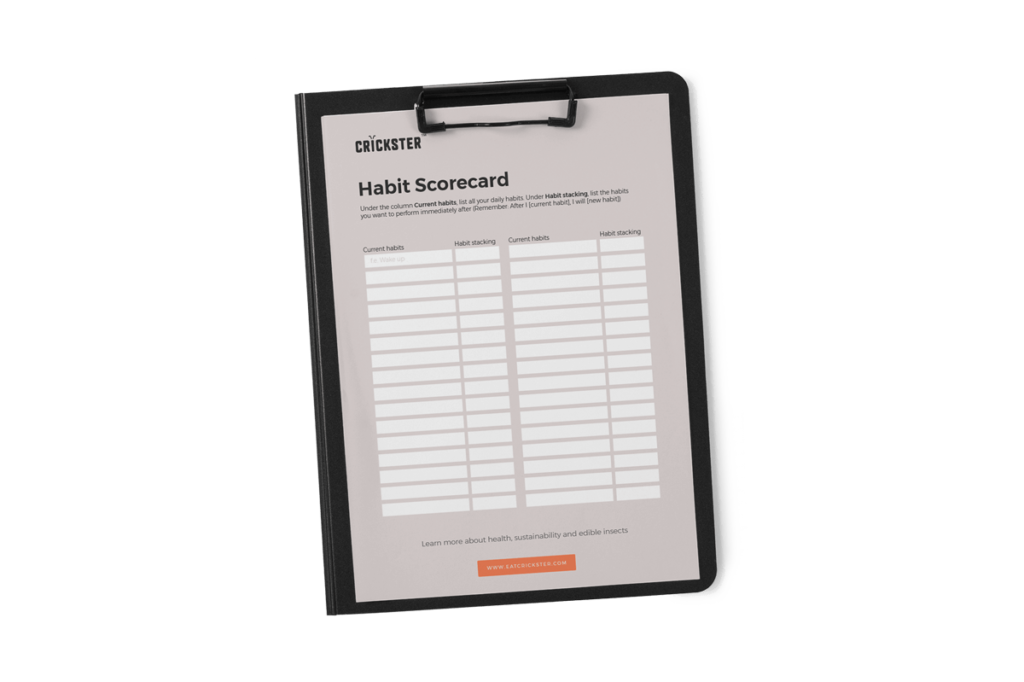
Hearing yourself voice your habits out loud adds reinforcement.
In order to change or build a new habit you have to have an implementation plan including when, where, and how you’re going to change those behaviors and make them habits. Apply a pre-determined plan – set for specific days and times.
No behavior happens in isolation. Each behavior becomes a cue that triggers an action for the next behavior. One of the ways to build a new habit is to use the connectedness of behaviors between habits. You can build a new habit on top of an existing habit that might have some kind of connectedness. This is what Clear calls habit stacking. Habit stacking is like setting a simple set of rules that will guide you each day.
He tells us to write this down: After (current habit) I will (new habit).
Clear also emphasizes to consider WHEN you are most likely to be successful. Set your cue for a new habit in that time slot.
Visual cues are a big catalyst in behavior. What you see often influences what you do.
You don’t have to be a victim of your environment; you can be the architect of it. Be the designer of your world and not simply the consumer of it. It is easier to associate a new habit with a new context. Go to a different place and start a new routine there. It is easier to associate a new routine with a new context.
Clear also spends a few chapters talking about things that seem beyond our control, but that we should keep in mind because they influence our habits. They include: physiology, culture, cravings, and genetics.
Habits are dopamine driven – every habit or addiction is associated with higher levels of dopamine. But here’s the added feature: Dopamine spikes not only when you experience pleasure but when you anticipate it. It’s the anticipation of a reward, not the fulfillment of it that gets us to take action. In order to take advantage of this, Clear introduces the concept of temptation bundling, which is when you do one desirable activity with a habit you want to form. In other words, doing the thing you need to do means getting to do the thing you want to do. To make forming new habits easier, make any habit more attractive than it would be otherwise.
Whatever habits are normal in your culture are among the most attractive. One of the deepest human desires is to belong. We imitate three groups: the close, the many, and the powerful. We are influenced by those who are closest to us; when you see habits being executed by those around you, it feels easier to be accomplished. To take advantage of this human trait, surround yourself with people that have habits you want to have yourself; you’ll rise together. Join a desired group where you already have something in common with the group. He uses the example of Nerd Fitness, which brings together computer geek types into a fitness environment together.
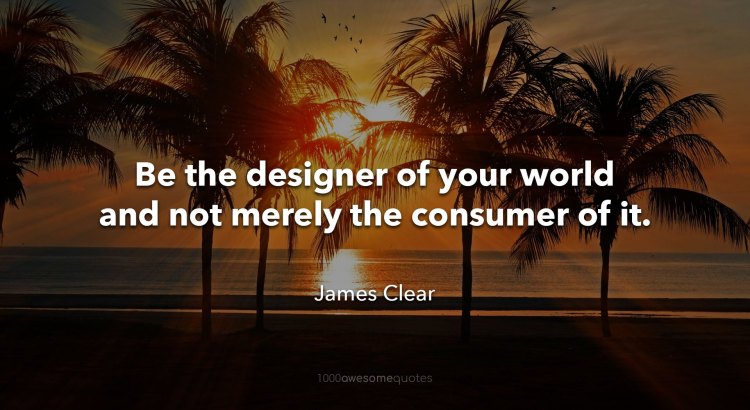
The normal behavior of the tribe often overpowers the behavior of the individual. Most days we’d rather be wrong with the crowd, then right by ourselves. If a behavior will win the approval, respect, and praise of the powerful we will find it attractive. Habits are modern day solutions to ancient problems. The underlying motives of human behavior remain the same; the underlying habits differ based on the period we live in.
A craving is the sense that something is missing. It is the desire to change your internal state. Desire is the difference of where you are now and where you want to be in the future. The specific craving you feel and habit you perform are a way to address the underlying emotion you feel. When an action successfully addresses an emotion you feel, you develop a habit overtime.
Habits are effective when we associate them with positive feelings. We can use this to our benefit, rather than to our detriment. Hard habits can be changed by a simple mindset. For example, instead of saying you have to wake up early or you have to make another sales call, change your mindset with one-word change: you get to wake up early and you get to make a sales call. Both are true, but one is more positive way of looking at it. If you’re trying to form a new habit, use something you associate as positive with that habit.
In order to create a new habit don’t prepare for it, but practice it, even if it’s not perfect. Just get your reps in! Repeating a habit leads to clear physical changes in the brain. Repetition is a form of change.
Make the formation of a new habit easy: the lower amount of energy a behavior takes, the easier it is for it to occur and be repeated. You can create an environment design on where to make your new habit easier. The less friction you face the easier it is for your stronger self to emerge. Every business is a never-ending quest to deliver the same result in an easier fashion. Create an environment where doing the right thing is as easy as possible
Every day there are little decisive moments that make a big impact towards forming your habits. Habits are the entry point, not the end point. They are the cab that you call to get you to the gym, they are not the gym.
Clear suggests the 2-minute rule: when you start a new habit, you should be able to do it in less than 2 minutes. You will find any habit can be scaled down to two minutes. Running a marathon is difficult but putting on your running shoes is easy. Make your habit putting on your running shoes. Make it a habit to show up and then you will master the final details. Make the first action mindless and the rest will follow.
Make your bad habits more difficult by creating a commitment device. What is rewarded is repeated. What is punished is avoided.
The cost of your good habits is in the present. The cost of your bad habits is in the future. The more immediate pleasure you get from an action the more you should question its validity toward your long-term goals. The road less traveled is the road of delayed gratification.
Progress is motivating and visual habits reinforce that. To take advantage of this, Clear suggesting getting a habit tracker – something visual, like a punch card or a tally mark of a habit. Get in a habit streak, much like the app for 10,000 steps a day motivates you each day to take those steps and visually see the progress each day. “Don’t break the chain” is a powerful mantra. Habit tracking helps you focus on the process not the result. Measurement is good when it guides you, not when it consumes you. Never miss twice. If you miss one day, try to get back on track as quickly as possible.
Punishment can change behavior. Late fees on a bill paid late is an example he uses. The behavior only shifts if the punishment is painful enough and reliably enforced. The more local, painful, and immediate the consequence is the more likely it is to influence immediate behavior. One way to enforce this punishment is to make a habit contract and have someone else sign it with you to hold you accountable. Knowing someone is watching you can be a powerful motivator.
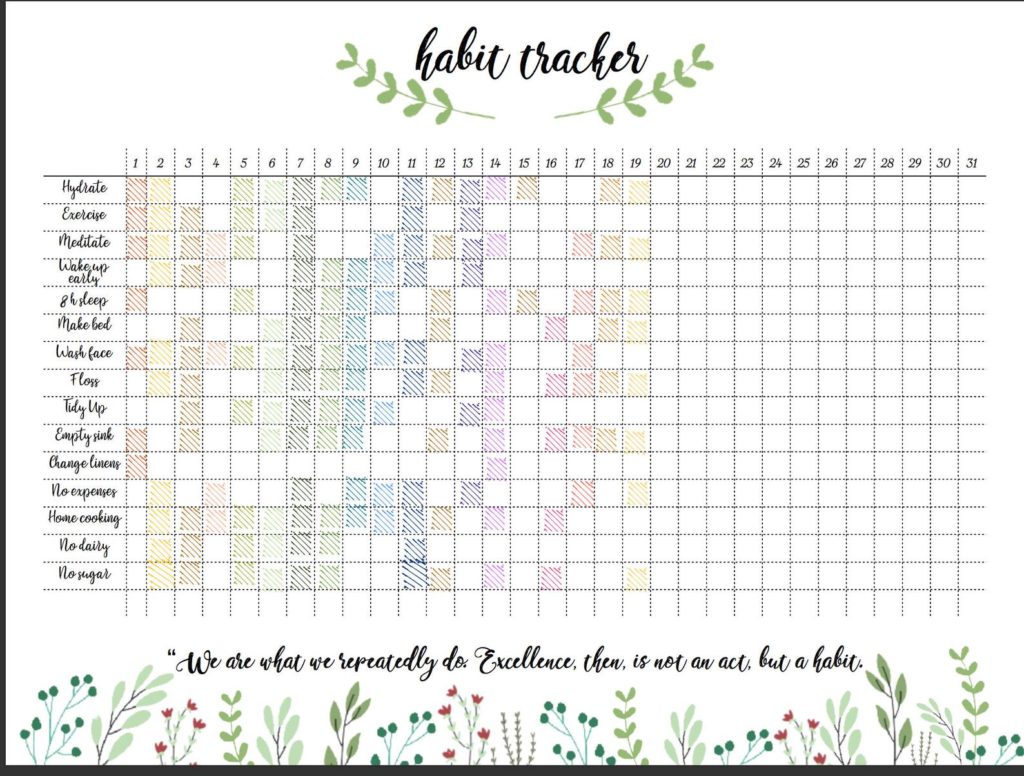
Clear takes on genetics as one factor that seems to make a certain habit easier or more difficult. He doesn’t view genetics as a predisposition for or against you. He simply says that the key is to align your ambition with your ability. Genes do not eliminate the need for hard work; they clarify it. They tell us what to work hard on.
Build habits that work for your personality. In addition, Habits need to be enjoyable if they are going to stick.
Clear emphasizes the Goldilocks rule, which states that humans experience peak motivation when working on tasks that are right on the edge of their current abilities. Work on tasks that are of “just manageable” difficulty. You need to have just enough victories to keep you motivated and just enough mistakes to keep you working hard.
The greatest threats to habits are not failure, but boredom. He says it’s hard stepping up when it’s painful or boring or draining. This is the difference between a professional and an amateur. The only way to become excellent is to be endlessly fascinated by doing the same thing over and over.
Just as you are mastering a habit, it is important not to slip into complacency. Establish a system of reflection and review. Twice a year James Clear does a reflection and review.
At the end of each year, he asks three questions:
(1) what went well this year?
(2) what didn’t go well?
(3) what did I learn?
During his midyear review, he has an integrity review: this is where he reflects on his identity and whether he is living out his values and the kind of person he wants to become. His integrity review includes three questions:
(1) what are the core values that drive my life and work?
(2) how am I living and working with integrity right now?
(3) how can I set a higher standard in the future?
Clear also cautions about the downside of forming habits. Sometimes we let them go on autopilot and sometimes we allow it to completely define us. The more you let a single belief define you, the more incapable you are of adapting when life challenges you. “If you tie up everything in being one thing, then the loss of that facet of your life will wreck you … When you cling too tightly to one identity you become brittle; lose that one thing and you lose yourself.”
The key to mitigating these losses of identity is to redefine yourself such as that you get to keep important aspects of your identity even if your particular role changes. When chosen effectively, an identity can be flexible rather than brittle.

He concludes the book by asking the reader to think about these questions: Can one tiny change transform your life? What if you made one change and then another and then another and then another? At some point you will have to admit your life was transformed by one small change. “Small habits don’t add up; they compound. That’s the power of atomic habits.”
The book also includes many online resources from atomichabits.com and, of course, I’m now on his email list. I’ve even created a sub-folder in my email inbox to slide his “add on” notes that were sent after I registered, as well as his weekly e-newsletter. This book is full of constant drops of wisdom. And it’s worth revisiting quite often to make sure I’m staying on track with habits I want to build and to keep building new habits to transform into the person I want to be.
